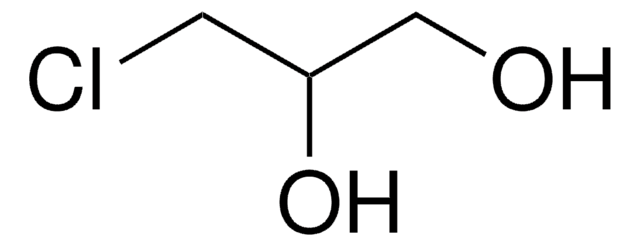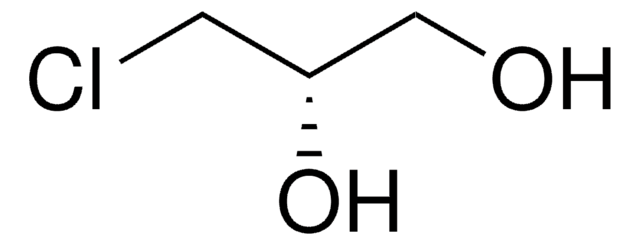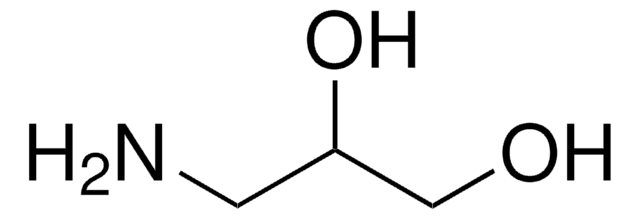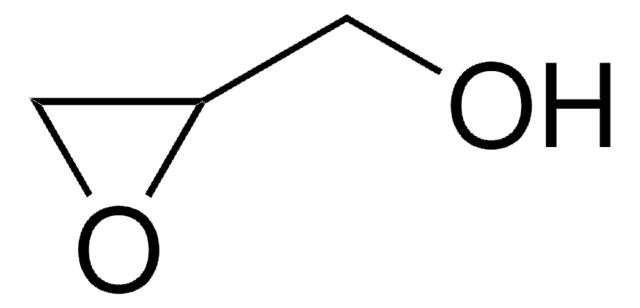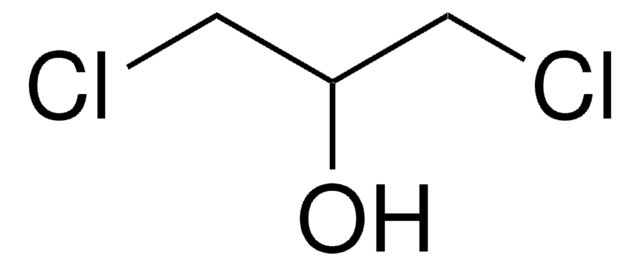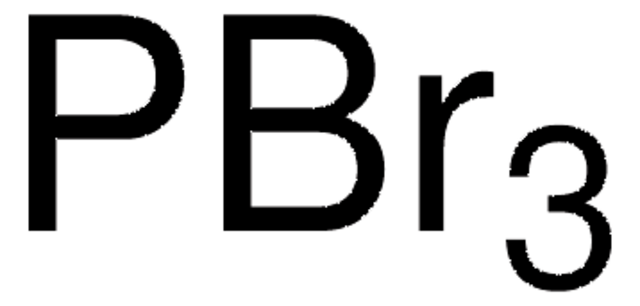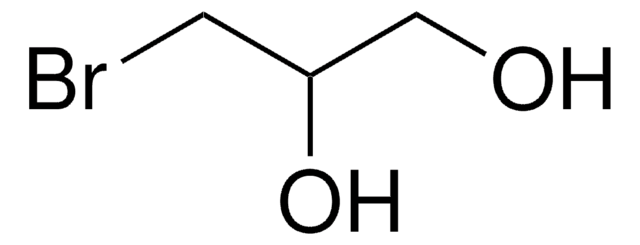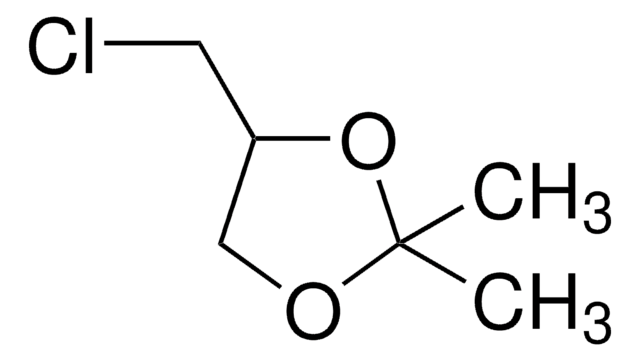540056
(R)-(−)-3-Chloro-1,2-propanediol
97%, optical purity ee: 98% (GLC)
Sinónimos:
(R)-α-Glycerol chlorohydrin
About This Item
Productos recomendados
presión de vapor
0.04 mmHg ( 25 °C)
Nivel de calidad
Ensayo
97%
actividad óptica
[α]20/D −1°, neat
pureza óptica
ee: 98% (GLC)
índice de refracción
n20/D 1.48 (lit.)
bp
213 °C (lit.)
densidad
1.321 g/mL at 20 °C (lit.)
grupo funcional
chloro
hydroxyl
cadena SMILES
OC[C@@H](O)CCl
InChI
1S/C3H7ClO2/c4-1-3(6)2-5/h3,5-6H,1-2H2/t3-/m0/s1
Clave InChI
SSZWWUDQMAHNAQ-VKHMYHEASA-N
¿Está buscando productos similares? Visita Guía de comparación de productos
Categorías relacionadas
Información legal
Palabra de señalización
Danger
Frases de peligro
Consejos de prudencia
Clasificaciones de peligro
Acute Tox. 2 Inhalation - Acute Tox. 3 Oral - Carc. 2 - Eye Dam. 1 - Met. Corr. 1 - Repr. 1B - Skin Irrit. 2 - STOT RE 1 Oral - STOT SE 1 Oral
Órganos de actuación
Kidney
Código de clase de almacenamiento
6.1A - Combustible acute toxic Cat. 1 and 2 / very toxic hazardous materials
Clase de riesgo para el agua (WGK)
WGK 3
Punto de inflamabilidad (°F)
275.0 °F - closed cup
Punto de inflamabilidad (°C)
135 °C - closed cup
Equipo de protección personal
Eyeshields, Faceshields, Gloves, type ABEK (EN14387) respirator filter
Elija entre una de las versiones más recientes:
¿Ya tiene este producto?
Encuentre la documentación para los productos que ha comprado recientemente en la Biblioteca de documentos.
Los clientes también vieron
Nuestro equipo de científicos tiene experiencia en todas las áreas de investigación: Ciencias de la vida, Ciencia de los materiales, Síntesis química, Cromatografía, Analítica y muchas otras.
Póngase en contacto con el Servicio técnico